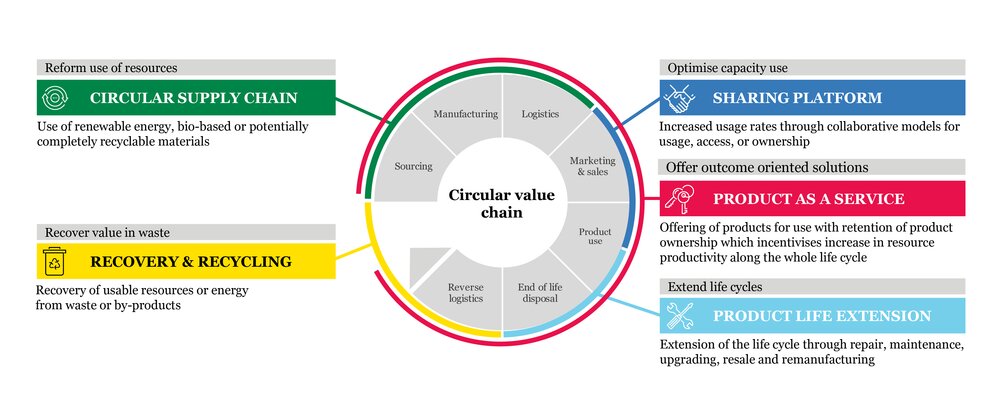Circular Economy Business Models
The Circular economy (CE) is a system that is designed to be restorative and regenerative in order to transition current linear production and consumption patterns to cyclical ones that remove waste from the system. CE is increasingly seen as way to contribute to sustainable development. To contribute to redesign for the CE, we must all make changes in the way we produce, consume and manage waste.
For more information on the Circular Economy, see the Ellen MacArthur Foundation
 Source: Accenture (2014)
Source: Accenture (2014)
One way for organizations to contribute to the CE is through circular economy business models (CEBM). CEBMs work to reduce resource use and waste within production, but also to extend product life cycles and employ strategies that allow the consumer to do more than buy, use and dispose.
Some common archetypes for CE business models:
*This material is largely adapted from: Circular Advantage: Innovative Business Models and Technologies to Create Value in a World without Limits to Growth (Accenture, 2014)
More resources and CBM theory:
- Business models and supply chains for the circular economy (Geissdoerfer, Morioka, Carvalho & Evans, 2018)
- A review and typology of circular economy business model patterns (Lüdeke-Freund, Gold & Bocken, 2019)
- Designing the business models for circular economy: Towards the conceptual framework (Lewandowski, 2016)
